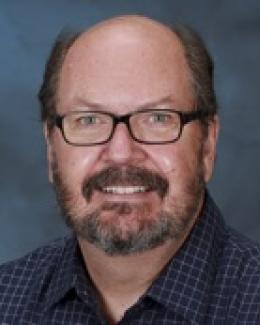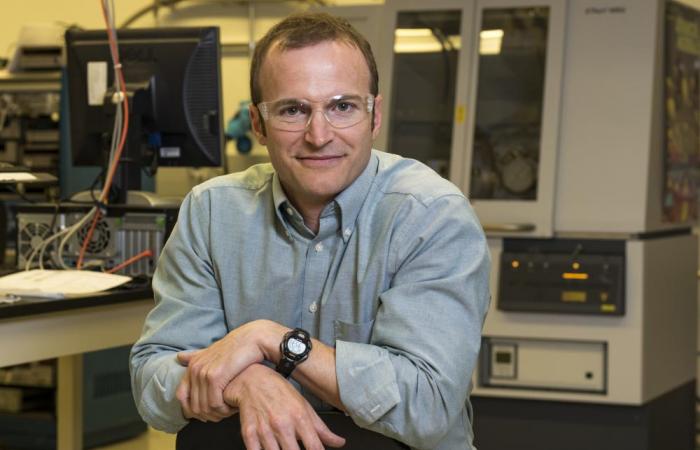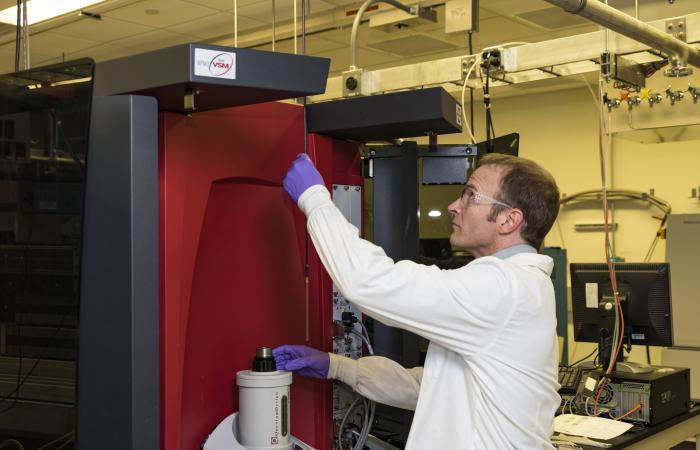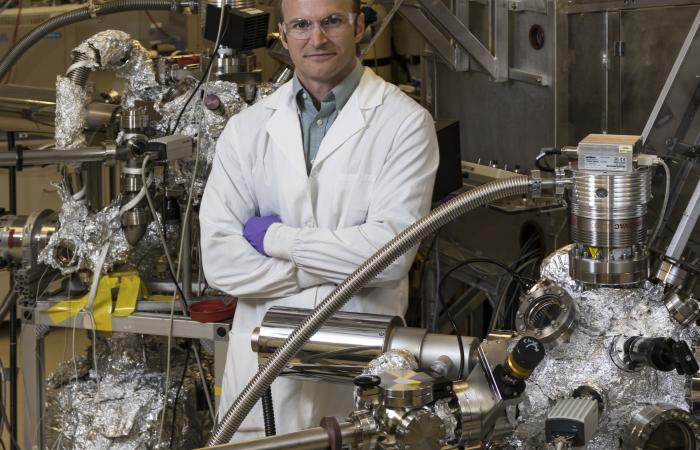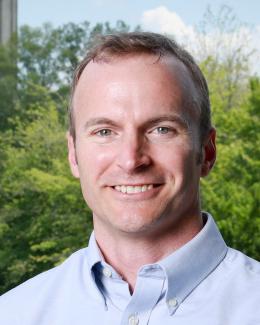A conversation with condensed matter physicist Zac Ward
What does condensed matter physics have in common with hitchhiking around the world? For ORNL’s Zac Ward, the answers would include “new experiences” and “uncomfortable challenges.”
Ward discovered physics after earning a bachelor’s degree in English literature, teaching a year in Japan, and doing a lot of traveling. He went back to school, picking up a bachelor’s degree in physics from the University of Missouri and a Ph.D. in physics from the University of Tennessee. He arrived at ORNL in 2009 as a Eugene Wigner Fellow.
Ward won a 2017 Early Career Research Program award from DOE’s Office of Science for his proposal “Designing Metastability: Coercing Materials to Phase Boundaries.” We talked with him about the project and what drew him to a career in science. This is an edited transcript.
What draws you to condensed matter physics?
Experimental condensed matter is a fun area of physics to work in. My typical day includes working at vacuum pressures lower than near Earth orbit, shooting things with lasers and X-ray beams, and working at temperatures just above absolute zero. If I have an idea, but there isn’t currently a way to measure that idea, I get to design and build something that can do it. Then, collecting the data and being the first person to have seen a particular behavior which gives a new insight into how the world works is great.
Being at ORNL is especially nice. If you have an idea that requires expertise that you don’t have, you can just walk down the corridor, knock on a door, and find somebody that is a leading expert in whatever that may be. So we can flesh out what we need to do to solve whatever the question is.
Tell us about your project.
The way that materials behave—Are they magnetic? Are they resistive? Are they structurally strong?—can be simply thought of as a response to what the electrons in a particular material are doing. The electrons are part of the atoms. Controlling the atoms’ arrangement to one another changes where the electrons reside and how they interact with one another. If we can control the atomic structure, we can then manipulate what the electrons are doing. By studying the relationship between structure and function, we can then gain a deeper understanding of the electronic correlations that drive complex materials.
My project aims to understand how electrons behave and how they talk to each other in functional materials where the electrons are strongly correlated with one another. We have recently discovered a way to control structural symmetry in these materials using noble ion implantation. This method allows us to arrange the atoms in ways that nature wouldn’t normally permit. This should allow new insights into how these materials generate functionally important properties while giving us a means to control them in a simple way. This can then lead to new types of sensing, energy conversion, or computing applications.
Why is this research important?
It’s fundamental science. We don’t know exactly what’s going to come from it, other than we will know more about how things work after doing the research. The promise of learning something new is the important part for me. It would be great if I could tell you that the work’s ultimate importance is that it will spawn a new industry, cut our country’s energy consumption by 80 percent, and cure aging. But I can’t.
Fundamental science is the base over which all of our technologies grow. So that’s what this project is. It’s a way of going in and fertilizing the ground, and hopefully something useful grows out of that. The importance is just learning new properties and learning how things work, and then from that something great may come. But there’s no way to tell what that is yet. What I can tell you is that there is a fundamental project being funded right now that will spawn the next billion dollar industry. Maybe it’s this one. Maybe it’s a different one.
What attracted you to a career in science?
I spent quite a bit of time traveling and wandering around before getting into physics. What I realized is, as far as traveling goes, everything’s been discovered. So you can go out and put yourself in uncomfortable situations, and learn something about yourself, but if you want to be the first person to go somewhere in the world, it’s pretty much impossible now.
So this is one thing that physics did. I found that you can go into your own lab, have an idea about something, and be the first one to see a property and be the first one to do something and share that with other people. That’s what really drove me toward this career.
